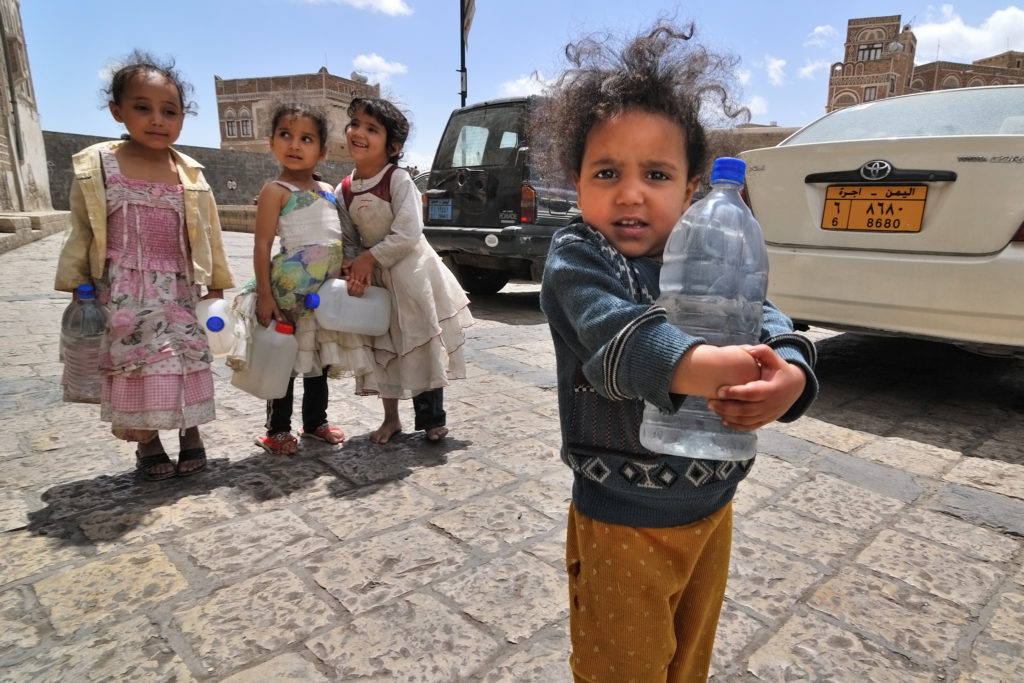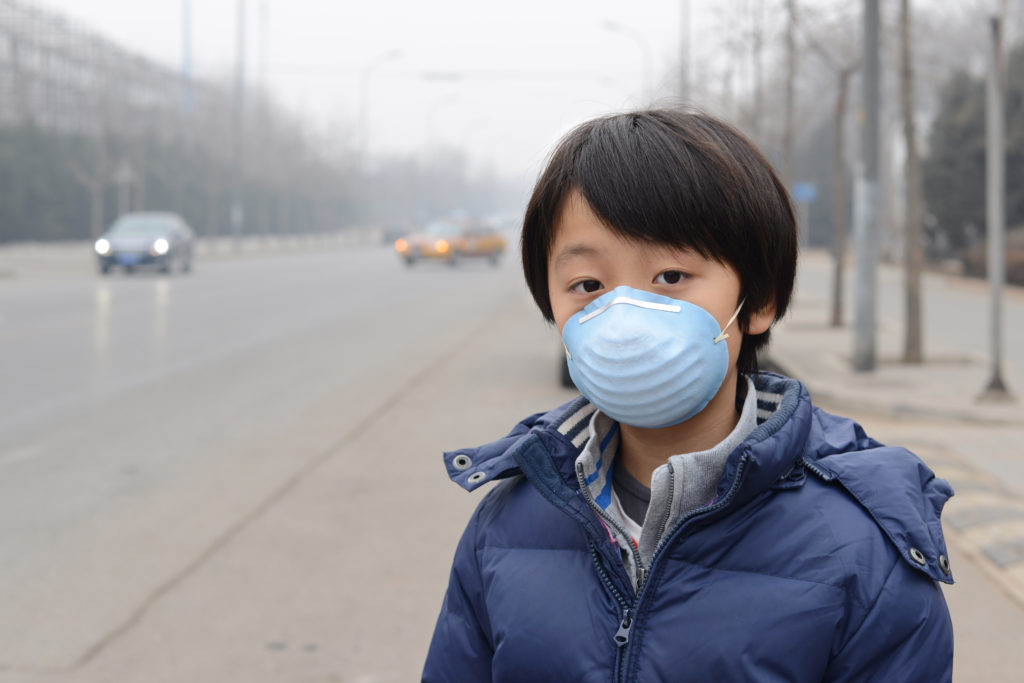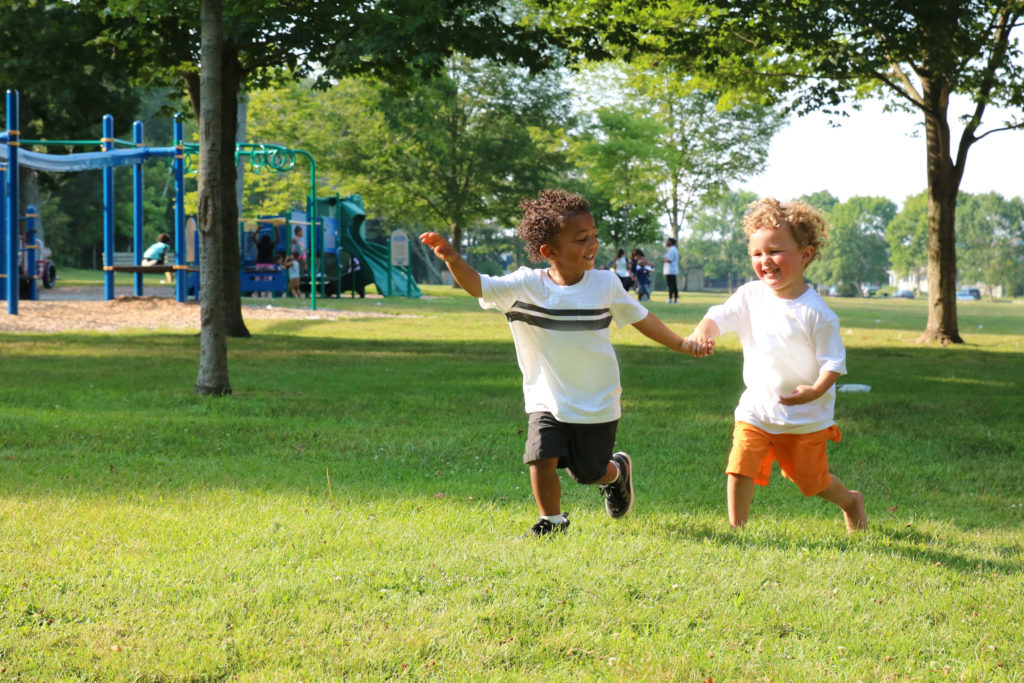Malnutrition, inequity in health, unequal education opportunities, air pollution and vehicular traffic, violent and abusive environments are some of the grave issues that affect children living in urban areas. While urban settings do provide quality services and opportunities for its population, a significant portion of the urban population is left behind, out of which one of the most vulnerable groups are its children.

Definition of an urban area
While there is no universally accepted definition of an ‘urban area’, it is often defined in comparison to and alongside with the term of a ‘rural area’. This distinction is based on the assumption that urban areas “provide a different way of life and usually a higher standard of living than rural areas” (United Nations, 2017).
Indeed, in various developed countries, the above-mentioned distinction is more blurred, and “the principal difference between urban and rural areas in terms of living standards tends to be the degree of population concentration or density” (United Nations, 2017). In contrast, this difference between urban and rural areas is evidenced to be less significant in developing countries (United Nations, 2017).
Urban areas are often described as having a developed and density of infrastructures, such as “houses, commercial buildings, roads, bridges, and railways” (National Geographic, 2023). More commonly, an urban area can refer to towns, cities and suburbs (National Geographic, 2023). They are often associated with the following characteristics: a large and concentrated population, development of infrastructures or services, and economic growth (Save the Children, 2012).
It can be estimated that out of four billion people living in urban areas, around a third of that group are children, and that it is estimated that by 2050, around 70 per cent children overall will be living in urban areas, many most likely in slums (Child Friendly Cities Initiative, n.d.). Children living in urban areas face daily struggles and difficult living conditions, which range from malnutrition to being exposed to violent and abusive environments.
Risk factors for children living in urban areas
Child malnutrition
The root cause for urban food insecurity is linked to the lack of sufficient and/or regular incomes in households. This scarcity is caused by the high rates of unemployment, low wages and the unpredictable nature of temporary hires (Global Alliance – Cities 4 Children, 2021). Given that food represents an important portion of the household budget, any decline in income, or rise in food prices, would prevent impoverished households to benefit from sufficient or adequate healthy food in their daily lives.
Child malnutrition can begin as early as in utero and early malnutrition in children can “contribute to impaired cognitive development, leading to lower school performance and adult productivity” (Global Alliance – Cities 4 Children, 2021). Children from low-paid households have poor-quality diets resulting in nutrient deficiencies (Global Alliance – Cities 4 Children, 2021). Besides, due to food scarcity and the fact that street food is usually more affordable for low-income households, adults and children are more likely to consume foods containing energy density and lacking nutrients, which renders them more exposed to obesity (Global Alliance – Cities 4 Children, 2021).
In recent times, malnutrition in urban areas has also been exacerbated by two additional factors: the Covid-19 pandemic and climate change. The Covid-19 pandemic has caused important declines in household incomes, rendered nutritious foods less available and affordable, and forecasted increases in child malnutrition (Global Alliance – Cities 4 Children, 2021). In addition, climate change has led to contaminated lands, floods, heatwaves and health hazards, which disproportionately affect lower-income households and create precarious livelihoods, that contribute to malnutrition of children, which they suffer in the long term (Global Alliance – Cities 4 Children, 2021).
Inequity in child health

With the concentration of population in dense urban areas comes the issue of inequity in child health (United Nations, 2016). Children have the right to the highest attainable standard of health and to facilities for the treatment of illness and rehabilitation (Convention on the Rights of the Child, 1990). However, children in urban areas face deep inequalities in relation to accessing clean water and to proper health services. The quality of water, and its use thereof, remains a “crucial health issue” (United Nations, 2017).
It has been recounted by the World Health Organization (‘WHO’) that “almost 40% of urban dwellers have no access to safely managed sanitation services and many lack access to adequate drinking water” (World Health Organization, 2021). Due to a fast-paced population growth occurring in urban areas, city planning and infrastructures are failing to provide most urban residents in developing countries with water and adequate sanitation, contributing “to poor health conditions and heavy pollution loads in wastewater” (United Nations Water, n.d.).
Although urban areas welcome the majority of contemporary health facilities, too many children living in urban areas are nonetheless deprived of these essential services (UNICEF, 2012). The primary problem is, again, the affordability of such services for lower-income households.
Furthermore, when these health services are in fact affordable, they are often “overcrowded, poorly maintained and contaminated” (UNICEF, 2012). Urban slums are particularly a high-risk area for communicable diseases due to the lack of sanitary conditions available, and children’s health consequently is affected (UNICEF, 2012).
Unequal education opportunities
It is every child’s right to gain access to education, and this should be achieved through equal opportunity (Convention on the Rights of the Child, 1990). However, reality paints a different picture. According to UNICEF, “13.4 million poor children living in cities (…) are less likely to complete primary school than their rural counterparts” (UNICEF, 2018).
There are several factors hindering access to education for children living in urban areas. Foremost, poverty, malnutrition and ill health are all contributing factors undermining children’s access to education (UNICEF, 2012). As elaborated in the previous sections, these factors severely affect the quality of children’s lives in urban areas, leading to the absence of these children in schools.
Furthermore, urban areas tend to gather diverse groups of individuals, “including ethnic minorities, refugees, internally displaced people and children who may be living or working on the street” (UNICEF, 2012). In urban areas, disparities among these groups are heightened whereby there are disparities in the access to schooling these children will receive (UNICEF, 2012). These children can first face challenges in so that they will not have suitable educational options available in their own language (UNICEF, 2012).
Another problem is the lack of official registration of these children, barring them from attending school (UNICEF, 2012). And for children who have had their education interrupted, due to their individual difficult backgrounds, they find themselves with a lack of programmes suited to them (UNICEF, 2012).
More acutely, public education options are scarce in slums (UNICEF, n.d.), where “families face a choice between paying for their children to attend overcrowded private schools of poor quality or withdrawing their children from school altogether” (UNICEF, 2012). School expenses and fees also represent an important part of a household budget, and for this reason, can place lower-income households and their children, in very precarious circumstances (UNICEF, 2012).
Air pollution and vehicular traffic
Living in urban areas comes with additional health hazards, such as being faced with air pollution and vehicular traffic leading to road accidents (UNICEF, 2018; UNICEF, 2012).

More particularly, populations in low-income cities are “the most at risk for respiratory diseases and other long-term health problems” (World Health Organization, 2016). And regarding vehicular traffic, it has been recounted that child road traffic fatalities may occur more frequently in rural areas due to the “high speeds, lack of physical separation of lanes, numerous intersections, poorly maintained roadsides and use of modified motorized vehicles with an overload of passengers, including children going to school” (UNICEF, 2022).
Air pollution in concentrated urban areas is recorded to be at its highest ever, and the WHO has warned that “ambient air pollution, made of high concentrations of small and fine particulate matter, is the greatest environmental risk to health – causing more than three million premature deaths worldwide every year” (World Health Organization, 2016). There are two forms of air pollution suffered by urban populations: indoor and outdoor pollution. Indoor pollution is caused by fuel used for cooking in a household (United Nations, 2017).
Using such cooking fuel in poorly ventilated areas – more common for low-income households – is one of the factors causing indoor pollution (UNICEF, 2012). Outdoor pollution is caused by, but is not limited to, toxic exhaust fumes from vehicles.
In addition to worsening the air quality in urban areas, vehicular traffic can also represent a physical threat to children, especially if there is a lack of safe playground spaces, sidewalks and crosswalks (UNICEF, 2012). Road traffic generates numerous injuries suffered by the population, and such “injuries are the leading single cause of death among people aged 15–29, and the second for those aged 5–14” (UNICEF, 2012).
Violent and abusive environments
Children living in urban areas are at risk of finding themselves in violent and abusive environments. As discussed in the preceding sections, children in urban areas are exposed to malnutrition and inequity in the access to health services and to education.
Standalone, these problems are of grave concern, but taken together, they also bear the consequence of putting children of urban areas at risk for violence and abuse. Stripped from a protective and healthy environment, children are “routinely exposed to various forms of abuse, neglect, exploitation and violence in their homes and schools, in care and justice systems, in places of work and in their communities” (Save the Children, 2012).
Children working on the streets, or children working in any other type of work, are more exposed to violence as these children more often than not face discrimination and are ill-treated by the adults of their community (Save the Children, 2012). Both boys and girls are also at risk of sexual abuse and exploitation (Save the Children, 2012).
Moreover, children forced into early labour due to the precarious economic situation of their families, are confronted with exploitative work. According to the ILO, around 115 million children work in hazardous conditions (International Labour Organization, 2010). In that said environment, both the mental and physical health of children are endangered.
Another difficulty children face in urban areas is gang violence. Children can become targets or witness “mugging, assaults, communal conflict and murder” (Save the Children, 2012). In addition to being confronted with such violence, children may be prompt to join urban-based gangs as it would provide them with status upon joining the gang, a certain sense of belonging and also and most importantly, protection, while exposing them to “criminal activities, drugs, and sexual and other forms of violence” (Save the Children, 2012). This can scar children both psychologically and physically (Save the Children, 2012).
Better opportunities for children in urban areas

Because of the multi-layered and intersectional discrimination children in urban areas face, States and the international community should cater to tailored and child-focused policies in order to counter the various human rights violations to which children living in urban areas are subjected. For this reason, the following actions should be encouraged and supported:
- Prioritizing the increase of working opportunities in urban areas in order to reach specific in the new strategic plan (United Nations Economic and Social Council, 2020).
- Focusing on addressing the malnutrition suffered by children living in urban areas and creating an exhaustive approach to nutrition programs (UNICEF, 2020).
- Developing global and regional strategic cooperation in order to remedy the living conditions of children living in slums (United Nations Economic and Social Council, 2020).
- Ensuring that the air quality in urban areas becomes a health priority (World Health Organization, 2016).
- Mobilizing the community to address the issue of violence and abuse suffered by children in urban areas, and involving young people, their families, civil society, local schools, and their local governments (Save the Children, 2012).
Written by Moïra Phuöng Van de Poël
Internally proofread by Aditi Partha
Last updated on 23 February 2023
Bibliography:
Child Friendly Cities Initiative. (n.d.). Growing Cities. Retrieved from UNICEF Child Friendly Cities Initiative at https://childfriendlycities.org/growing-cities/, accessed in February 2023.
Global Alliance – Cities 4 Children. (2021). Urban Children and Malnutrition. Retrieved from Global Alliance – Cities 4 Children at https://cities4children.org/wordpress/wp-content/uploads/2021/06/Nutrition-and-Food-Security-20210616.pdf, accessed in February 2023.
International Labour Organization. (2010). Facts on Child Labour. Retrieved from International Labour Organization at https://www.ilo.org/wcmsp5/groups/public/—dgreports/—dcomm/documents/publication/wcms_126685.pdf , accessed in February 2023.
National Geographic. (2023, January 5). Education – Resource – Urban Area. Retrieved from National Geographic at https://education.nationalgeographic.org/resource/urban-area/, accessed in February 2023.
Save the Children. (2012, May). City Kids: Urbanisation and its consequences for children’s right to be protected from abuse, neglect, exploitation and violence. Retrieved from Save the Children at https://cities4children.org/knowledgebase/city-kids-urbanisation-and-its-consequences-for-childrens-right-to-be-protected-from-abuse-neglect-exploitation-and-violence/, accessed in February 2023.
UNICEF. (2018, November). Advantage or Paradox? The challenge for children and young people of growing up urban. Retrieved from UNICEF at https://data.unicef.org/resources/urban-paradox-report/, accessed in February 2023.
UNICEF. (2012). Children in an Urban World – The state of the world’s children. Retrieved from UNICEF at https://www.unicef.org/media/84881/file/SOWC-2012-executive-summary.pdf, accessed in February 2023.
UNICEF. (2018, November 27). Millions of the world’s poorest urban children are more likely to die young and less likely to complete primary school than their rural peers. Retrieved UNICEF at https://www.unicef.org/turkiye/en/press-releases/millions-worlds-poorest-urban-children-are-more-likely-die-young-and-less-likely, accessed in February 2023.
UNICEF. (2020, December). Nutrition, for every child – UNICEF nutrition strategy 2020–2030. Retrieved from UNICEF at https://www.unicef.org/reports/nutrition-strategy-2020-2030, accessed in February 2023.
UNICEF. (2022, November). Technical Guidance for Child and Adolescent Road Safety. Retrieved from UNICEF at https://www.unicef.org/media/130721/file/UNICEF_Child_and_Adolescent_Road_Safety_Technical_Guidance_2022.pdf, accessed in February 2023.
UNICEF. (n.d.). Urban policy – Children living in urban slums and informal settlements risk being cut off from essential services. Retrieved from UNICEF at https://www.unicef.org/social-policy/urban, accessed in February 2023.
United Nations Economic and Social Council. (2020, December 14). E/ICEF/2021/3 – Evaluation of UNICEF work for children in urban settings. Retrieved from United Nations Economic and Social Council at https://www.unicef.org/executiveboard/media/3406/file/2021-3-Evaluation_Summary-Children_in_urban_settings-EN-ODS.pdf, accessed in February 2023.
United Nations General Assembly. (1990, September 2). Convention on the Rights of the Child. Retrieved from United Nations General Assembly at https://www.ohchr.org/sites/default/files/Documents/ProfessionalInterest/crc.pdf, accessed in February 2023.
United Nations. (2016, October 20). New Urban Agenda. Retrieved from United Nations Conference on Housing and Sustainable Urban Development at https://www.unicef.org/reports/nutrition-strategy-2020-2030, accessed in February 2023.
United Nations. (2017). Principles and Recommendations for Population and Housing Censuses, ST/ESA/STAT/SER.M/67/Rev.3. Retrieved from United Nations, Department of Economic and Social Affairs, Statistics Division at https://unstats.un.org/unsd/demographic-social/Standards-and-Methods/files/Principles_and_Recommendations/Population-and-Housing-Censuses/Series_M67rev3-E.pdf, accessed in February 2023.
United Nations Water. (n.d.). Water and Urbanization. Retrieved from United Nations Water at https://www.unwater.org/water-facts/water-and-urbanization, accessed in February 2023.
World Health Organization. (2021, October 29). Newsroom – Fact sheets – Detail – Urban health. Retrieved from World Health Organization at https://www.who.int/news-room/fact-sheets/detail/urban-health#:~:text=Noncommunicable%20diseases%20like%20heart%20disease,walking%2C%20cycling%20and%20active%20living, accessed in February 2023.
World Health Organization. (2016, May 12). UN health agency warns of rise in urban air pollution. Retrieved from United Nations Sustainable Development Goals at https://www.un.org/sustainabledevelopment/blog/2016/05/un-health-agency-warns-of-rise-in-urban-air-pollution-with-poorest-cities-most-at-risk/, accessed in February 2023.

